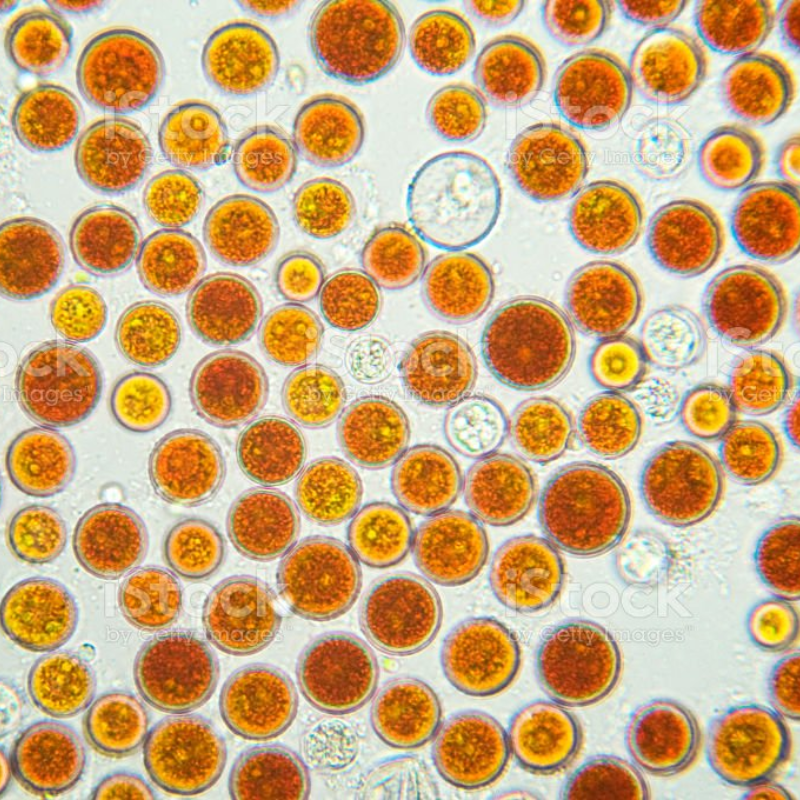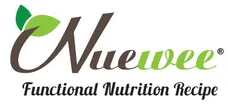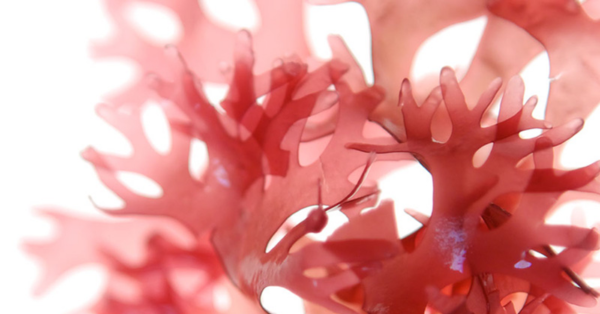Haematococcus pluvialis is a freshwater microalga belonging to family Chlamydomonadaceae. Strains of the alga extend across habitats ranging from the African lakes to the Arctic snowfields. Typical habitats are ephemeral ponds and rainwater pools, for example, rock pools in the Stockholm archipelago.

Under favorable conditions, the motile, green cells of Haematococcus pluvialis thrive, reproducing primarily by cell division. However, when facing drought, lack of nutrients, or other unfavorable conditions, the cells enter a resting state and become spores with thick cell walls. When transforming into this spore phase, these algae not only store fats as an energy source, but also begin producing and accumulating astaxanthin.
Astaxanthin acts like a force field that protects the nuclear DNA and cell content from oxidation and UV radiation. The encapsulated form of the alga is called an aplanospore and in this form, the alga can survive for long periods, even under harsh conditions.
| Source | Average Astaxanthin Content (mg/100g) |
| Lobster, crawfish | 0.3 |
| Salmon | 3 |
| Krill | 4 |
| Phaffia Yeast | 800 |
| Haematococcus pluvialis Microalgae | 6000 |
To sum up, astaxanthin that extract from Haematococcus pluvialis is edible for vegan too! For those who like to seek for products with astaxanthin, do visit our Organic Protein Powder with Astaxanthin >> Nuewee Organic Blackcurrant Protein with Astaxanthin


Looking for second-hand? second hand clothes We have collected the best stores with clothes, shoes and accessories. Large selection, unique finds, brands at low prices. Convenient catalog and up-to-date contacts.
Looking for second-hand? thrift shops near me We have collected the best stores with clothes, shoes and accessories. Large selection, unique finds, brands at low prices. Convenient catalog and up-to-date contacts.
карго грузы из китая доставка товаров из китая карго
порно русской девушки русское порно сиськи
Want to have fun? melbet drugs Watch porn, buy heroin or ecstasy. Pick up whores or buy marijuana. Come in, we’re waiting
Новые актуальные iherb russia промокод для выгодных покупок! Скидки на витамины, БАДы, косметику и товары для здоровья. Экономьте до 30% на заказах, используйте проверенные купоны и наслаждайтесь выгодным шопингом.
средняя стоимость курсовой заказать курсовую недорого и быстро
займы онлайн на карту 2025 займ онлайн
займы онлайн без отказа с плохой займ денег онлайн
перевод документов москва бюро технических переводов
cocaine prague buy coke in telegram
pure cocaine in prague plug in prague
buy cocaine in telegram prague drugs
prague plug pure cocaine in prague
cocaine in prague buy coke in telegram
plug in prague vhq cocaine in prague
40 shining crown slot variantları Pinco casino-da populyardır.
Shining crown joc gratis pulsuz təcrübə üçün əladır.
Shining crown online oyunu sürətli yüklənir. Shining crown jackpot böyük həyəcan gətirir. Shining Crown oyunu klassik meyvə simvollarını əhatə edir.
Shining crown 77777 böyük qrafika ilə hazırlanıb.
Shining crown casino çoxlu bonus imkanları verir.
Bu ünvan etibarlıdır http://www.shining-crown.com.az.
Shining crown gratis demo çox sevilir.
Shining crown lines qazanma yollarını artırır.
Нужна лабораторная? https://lab-ucheb.ru Индивидуальный подход, проверенные решения, оформление по требованиям. Доступные цены и быстрая помощь.
Нужен чертеж? https://chertezhi-kurs.ru выполним чертежи для студентов на заказ. Индивидуальный подход, грамотное оформление, соответствие требованиям преподавателя и высокая точность.
Нужна презентация? https://prez-shablony-ucheb.ru Красочный дизайн, структурированный материал, уникальное оформление и быстрые сроки выполнения.
Ən yaxşı seçimlərdən biri də Sunny Coin Hold The Spin onlayn versiyasıdır. Sunny Coin 2 hold the spin slot real pul ilə daha həyəcanlıdır.
Sunny Coin Hold The Spin slot oyununda böyük qalibiyyət şansı var. Sunny Coin 2 hold the spin slot oynamaq həyəcanlıdır.
Daha maraqlı təcrübə üçün klik edin sunny coin 2: hold the spin.
Sunny coin hold the spin demo oyna, risk olmadan öyrən. Sunny coin hold the spin oyna və fərqli təcrübə qazan. Sunny coin: hold the spin slot RTP səviyyəsi yüksəkdir.
Sunny Coin Hold The Spin pulsuz demo çox faydalıdır. Sunny Coin Hold The Spin real pul üçün əlverişlidir.
Нужна презентация? презентация через нейросеть бесплатно Создавайте убедительные презентации за минуты. Умный генератор формирует структуру, дизайн и иллюстрации из вашего текста. Библиотека шаблонов, фирстиль, графики, экспорт PPTX/PDF, совместная работа и комментарии — всё в одном сервисе.
Проблемы с откачкой? насос для откачки грязной воды сдаем в аренду мотопомпы и вакуумные установки: осушение котлованов, подвалов, септиков. Производительность до 2000 л/мин, шланги O50–100. Быстрый выезд по городу и области, помощь в подборе. Суточные тарифы, скидки на долгий срок.
заказ металлических значков заказ значков в москве
значки от производителя заказать металлические значки со своим дизайном
значок металлический с логотипом значки со своим дизайном
joszaki regisztracio joszaki.hu/
joszaki regisztracio joszaki.hu/
Formula 1 2025 təqvimini öyrənmək istəyənlər üçün faydalı məlumat. Formula 1 Bakıda 2025 tarixlərini indi öyrənin.
Son xəbərləri buradan oxuyun ➡ https://formula-1.com.az.
Formula 1 izləmək üçün ən sərfəli onlayn xidmətlər. Formula 1 izləmək üçün mobil tətbiqlərin üstünlükləri.
Formula 1 Baku track barədə dəqiq xəritə məlumatı. Formula 1 canlı yayım keyfiyyəti ilə bağlı rəylər. Formula 1 cars dizaynı və yenilikləri. Formula 1 canlı izləmə platformaları haqqında təcrübələr.
Android üçün ən yaxşı soccer tətbiqini sınayın.
Flashscore mobile livescore today soccer ilə ani nəticələr alın. Futbol xəbərləri və nəticələr üçün soccer 365 rahat mənbədir.
Dream league soccer 2024 versiyası daha müasir imkanlar verir. Livescore soccer results futbol azarkeşləri üçün vacibdir. Soccer predictions futbol nəticələrini təxmin etməyə kömək edir.
World soccer champs hile apk oyunçular arasında məşhurdur. Soccer stars sadə amma maraqlı oyundur. Sure soccer predictions mərc üçün yaxşı ipucları verir. Soccer star mod apk ilə daha çox imkan əldə edin.
LaLiga canlı izləmə üçün ideal mənbədir. İspaniyanın lider komandalarını tanı.
LaLiga canlı futbol həvəskarlarının seçimi. İspaniya futbolunun simvolu olan LaLiga loqosu.
Canlı futbol və nəticələr üçün ən rahat ünvan — laliga live score.
LaLiga goal of the season 2022 hələ də yadda qalır.
LaLiga matçlar hansı kanalda yayımlanır?.
İspaniya LaLiga top futbolçularını tanı.
LaLiga champions 2023 komandaları arasında böyük rəqabət.
LaLiga scoreboard dərhal yenilənir.
Лука Модричтин тактикалык ой жүгүртүүсү укмуш.Модричсиз Реалды элестетүү кыйын. Модрич — чыныгы футбол интеллекти. Бул чыныгы профессионализмдин белгиси. Жаңылык лентасы таза футбол темасында: luka-modric-kg.com. Лука Модрич Хорватия үчүн сыймык.
Анын Реалдагы карьерасы алтын барактар менен жазылган. Модрич жөнүндө китеп окуп чыктым, абдан таасирдүү. Модрич акчаны эмес, атакты тандаган адам. Анын тажрыйбасы каалаган клубга керектүү.
Перейра ушунчалык токтоо жана ишенимдүү — аны утуш абдан кыйын. Көрсө, Алекс Перейра көчөдөн чыккан, эми болсо дүйнөнүн чокусунда. Кызыктуу фактылар, фото жана рекорддор ушул шилтемеде: Перейра Алекс биография. Перейра менен Джон Джонстун беттеши көргүм келет.
Ким аны жеңе алат деп ойлойсуңар?
Ушундай жигиттер спорттун жүзүн өзгөртөт. Анын Adesanya менен болгон салгылашы классика. Анын соккусунан кийин көптөр оңоло албай калган.
Анын жигиттик сапаты өзүнчө сөз. Бул жөн эле мушкер эмес, бул философ.
Флойд Мейвезердин жашоосу жана ийгилиги көптөргө үлгү. Флойд Мейвезер – мыкты дисциплина менен белгилүү. Флойд Мейвезер тууралуу чыныгы жаңылыктарды жана макалаларды floyd mayweather kg com аркылуу билиңиз.
Ал рингде тактык жана ылдамдык менен айырмаланат. Анын ийгилиги ар бир спортчуга мотивация. Флойд Мейвезер ар дайым спорттун символу катары айтылат.
Флойд Мейвезердин бизнеси да ийгиликтүү.
Флойд Мейвезердин ийгилик сыры эмгек жана туруктуулук. Флойд Мейвезер ар бир беттешти мыкты өткөргөн. Анын ар бир интервьюсу чоң кызыгуу жаратат.
telecharger 1xbet https://parifoot-afrique.com
1xbet africain africain foot
telecharger 1xbet pronostic foot gratuit
**mindvault**
mindvault is a premium cognitive support formula created for adults 45+. It’s thoughtfully designed to help maintain clear thinking
Анын голдорунун статистикасы абдан таасирдүү.Анын командалык иши да, жеке чеберчилиги да мыкты. Футбол күйөрмандары үчүн ишенимдүү булак — https://harry-kane-kg.com/. Футбол дүйнөсү мындай оюнчуларды сейрек көрөт.
Баварияда Кейн жаңы рекорддорду коюуда.
Кейндин жашоосу көптөр үчүн үлгү. Ал талаада так позиция тандай билет. Кейн ар бир сезон өзүн мыкты формада кармайт. Ал бала чагынан эле футболчу болууну каалаган. Гарри Кейндин оюндарынын саны укмуш. Кейн социалдык тармактарда активдүү.
женский фитнес клуб в москве женский фитнес клуб
UFCдеги рейтинги, рекорду жана статистикасы бир бетте чогултулуп, издөөнү жеңилдетет.
Кайсы аренада жана кайсы убакта болору боюнча убакыт тилкелери менен ыңгайлуу гид бар. ислам махачев статистика Тейкдаун, контрол жана сабмишн көрсөткүчтөрү визуалдуу берилет. Жөнөкөй тилде түшүндүрмө бар. Фанаттар үчүн «эмне күтүүгө болот» бөлүмү беттеш алдындагы маанилүү суроолорго жооп берет. Федер жана лайтвейт контекстинде салмак маселеси жана шарттар талкууланат. Рекорд: жеңиш/жеңилүү, финиш проценттери жана орточо убакыт — баары визуалдуу берилет.
Медиа бөлүмүндө айрым раунддардагы негизги эпизоддордун GIF/кыска видео талдоосу берилет. Коэффициенттер жана линиялар боюнча кыска гид: ким фаворит, ким андердог — объективдүү маалымат. Медиа пакет издегендер үчүн расмий булактарга жол көрсөтөбүз. Жаңыртуулар тарыхы ачык көрсөтүлүп, өзгөртүүлөр датасы менен белгиленет.
Советы по выбору обоев Неймара: матчи, портреты, training — что лучше для экрана смартфона? Ищу «неймар обои барселона» и «бразилия»: хочется минимализма, без лишних логотипов. Хочу сверить номер и роль в текущем клубе, плюс свежие интервью. неймар сейчас. Где играет Неймар 2024/2025 и как выглядит его роль? Интересно для анализа комбинаций.
Неймар рисунок: ищу референсы для скетчей — профиль, движение, финт с остановкой. Неймар религия: редкая тема, важно корректно и без спекуляций — есть проверенные источники? Неймар жуниор — хочу подборку детских фото для сравнительного коллажа. Неймар Барселона обои — хочется классики без кричащих фильтров и водяных знаков.
Где играет Неймар 2024 — нужен апдейт раз в месяц с подтверждением источников. Неймар новости — лучше краткие дайджесты, чем длинные простыни текста.
Сливы курсов ЕГЭ 2025 https://courses-ege.ru
football africain melbet – paris sportif